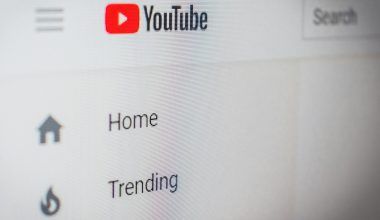The Ultimate Guide to Submitting Music to Playlists
Getting your music onto playlists is one of the best ways to grow your audience, gain streams, and connect with fans worldwide. But with so many artists submitting their tracks, the process can feel overwhelming. If you’ve been wondering how to submit music to playlists and stand out, this guide will walk you through the steps, strategies, and tips you need to know.
Why Playlists Matter for Musicians
Playlists have become the modern-day mixtape, and they play a massive role in music discovery. Platforms like Spotify, Apple Music, and YouTube Music are where millions of listeners find their favorite new songs. Being featured on the right playlist can boost your visibility, increase your streams, and even lead to career-changing opportunities. But before you dive into submitting your music, let’s explore why this strategy is so powerful.
Playlists aren’t just about numbers—they’re about reaching the right people. Curated playlists, whether made by official platforms, independent curators, or fans, can connect your music with listeners who genuinely enjoy your style. This targeted exposure can lead to more engaged followers and loyal fans.
How to Submit Music to Spotify Playlists
Spotify is one of the top platforms for playlist placements, offering both editorial and user-generated playlists. Here’s a step-by-step guide to get started:
1. Get Your Music on Spotify:
Before you can submit your music to Spotify playlists, ensure your tracks are uploaded via a distributor like DistroKid, TuneCore, or CD Baby. This ensures your music is available for streaming.
2. Use Spotify for Artists:
Spotify for Artists allows you to submit unreleased tracks directly to Spotify’s editorial team. This step is crucial for getting on official playlists. Log in, choose your upcoming release, and fill out the submission form with accurate details about your song.
3. Focus on Metadata:
When you submit music to playlists, metadata matters. Accurately tag your genre, mood, and instruments used in your track. This helps curators match your song to the right audience.
4. Create Your Own Playlists:
While waiting for playlist placements, build your own. Add your songs alongside tracks from similar artists to showcase your style and attract new listeners. Share these playlists with your fans to encourage engagement.
Finding Independent Playlist Curators
Official editorial playlists aren’t the only way to get noticed. Independent playlist curators can be just as impactful. Here’s how to find and pitch to them effectively:
1. Research the Right Playlists:
Look for playlists in your genre or niche. Use platforms like SubmitHub, PlaylistPush, or even social media to discover curators who align with your style.
2. Build Relationships:
Before pitching, engage with curators. Follow them on social media, comment on their posts, and show genuine interest in their work. Building a connection can increase your chances of being added to their playlists.
3. Craft a Personal Pitch:
When you submit music to playlists, avoid generic messages. Instead, introduce yourself, share a little about your music, and explain why your track fits their playlist. Keep your email or message concise and respectful.
Tips for Submitting Music Successfully
Getting onto playlists isn’t just about sending your track and hoping for the best. Here are some tips to maximize your chances:
1. Perfect Your Music:
Your song should be professionally produced and mastered. Curators won’t consider tracks with poor sound quality, no matter how good the songwriting is.
2. Understand the Playlist’s Audience:
Before you submit music to playlists, listen to them carefully. Notice the themes, mood, and genres they feature. Tailor your pitch to highlight how your song complements their vibe.
3. Don’t Spam:
Avoid sending your track to every curator you find. Target the ones who fit your music style and send thoughtful pitches. Spamming can harm your reputation.
Tools and Platforms to Help You Submit Music
Several platforms simplify the process of submitting your music to playlists. Here are some popular ones:
- SubmitHub: Submit your tracks to bloggers, curators, and influencers for a small fee.
- PlaylistPush: A paid service to connect your music with Spotify and Apple Music playlist curators.
- Groover: Another platform that helps you pitch your music to curators and industry professionals.
- Direct Outreach: Use social media or email to approach curators directly.
Growing Your Playlist Reach
Once you’ve submitted your music, it’s time to focus on growing your playlist’s impact. Here’s how:
1. Share the Playlist:
Promote the playlist on your social media, website, and email newsletter. The more streams the playlist gets, the more exposure your song will receive.
2. Engage with Listeners:
If your track is featured, interact with fans who discover you through the playlist. Respond to comments, messages, and shares to build a deeper connection.
3. Monitor Your Analytics:
Use Spotify for Artists or your distributor’s dashboard to track your streams and listener data. Understanding your audience can help you target future playlist submissions more effectively.
Staying Consistent
Submitting music to playlists isn’t a one-time effort. Success often comes from consistency and persistence. Keep releasing high-quality music, building relationships with curators, and exploring new playlists to submit your tracks.
Remember, every placement counts. Even small playlists can lead to significant growth over time. Keep your focus, stay authentic, and trust the process.
By following these steps, you’ll increase your chances of getting your music heard and connecting with a broader audience. So, what are you waiting for? Start submitting your tracks and let the world discover your sound.
For further reading, explore these related articles:
- The Amazing Linkin Park Band Members – The Team Behind the Magic
- Ellie Goulding Songs: A Magical Journey of Music and Feelings
For additional resources on music marketing and distribution, visit DMT Records Pvt. Ltd.






